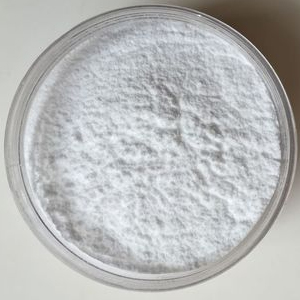
DEFINITION
Calcium Polystyrene Sulphonate is a cation-exchange resin prepared in the calcium form containing not less than 6.5% w/w and not more than 9.5% w/w of calcium, calculated with reference to the dried substance. Each g exchanges not less than 1.3 mEq and not more than 2.0 mEq of potassium, calculated with reference to the dried substance.
CHARACTERISTICS
A cream to light brown, fine powder.
Practically insoluble in water and in ethanol (96%).
IDENTIFICATION
A. The infrared absorption spectrum, Appendix II A, is concordant with the reference spectrum of calcium polystyrene sulphonate.
B. Yields reaction C characteristic of calcium salts.
TESTS
Particle size: Not more than 1% w/w is retained on a 150-μm sieve. Use 20 g and sieve for 5 minutes.
Potassium: Not more than 0.1% of K when determined by atomic emission spectrophotometry.
Sodium: Not more than 0.1% of Na when determined by atomic emission spectrophotometry ,
Heavy metals: Heat 4 g until charred, cool, add 4 ml of lead-free nitric acid and 0.5 ml of sulphuric acid drop wise and heat cautiously until white fumes are no longer evolved. Ignite in a muffle furnace at 500C to 600C until a white residue is obtained. Cool, add 4 ml of hydrochloric acid and dilute to 20 ml. The resulting solution complies with limit test A for heavy metals, Appendix VII. Use 2 ml of lead standard solution (10 ppm Pb) to prepare the standard (10 ppm).
Styrene: Carry out the method for liquid chromatography, Appendix III D, using the following solutions. For solution (1) shake 10 g of the substance being examined with 10 ml of acetone for 30 minutes, centrifuge and use the supernatant liquid. Solution (2) contains 0.0001% w/v of styrene in acetone.
The chromatographic procedure may be carried out using (a) a stainless steel column (30 cm × 4 mm) packed with octadecylsilyl silica gel for chromatography (μBondapak C18 is suitable), (b) a mixture of equal volumes of acetonitrile and water as the mobile phase with a flow rate of 2 ml per minute and (c) a detection wavelength of 254 nm. Inject separately 20 μl of each solution. The area of the peak corresponding to styrene in the chromatogram obtained with solution (1) is not greater than the area of the principal peak in the chromatogram obtained with solution (2) (1 ppm).
Potassium exchange capacity: To 3 g of the substance being examined in a dry 250 ml glass-stoppered flask add 100 ml of a solution containing 0.7455% w/v of potassium chloride and 0.4401% w/v of potassium hydrogen carbonate in water (solution A), stopper and shake for 15 minutes. Filter and dilute 2 ml of the filtrate to 1000 ml with water. Determine the concentration of unbound potassium in this solution by atomic emission spectrophotometry , Appendix II D, measuring at 766.5 nm and using solution A suitably diluted with water, to prepare the standard solutions. Calculate the potassium exchange capacity of the substance being examined in milliequivalents taking the concentration of potassium in solution A as 144 milliequivalents of K per litre.
Loss on drying: When dried at 70C at a pressure not exceeding 0.7 kPa for 16 hours, loses not more than 8.0% of its weight. Use 2 g.
Microbial contamination: Carry out a quantitative evaluation for Enterobacteria and certain other Gram-negative bacteria, Appendix XVI B1. 0.01 g of the substance being examined gives a negative result, Table I (most probable number of bacteria per gram fewer than 100).